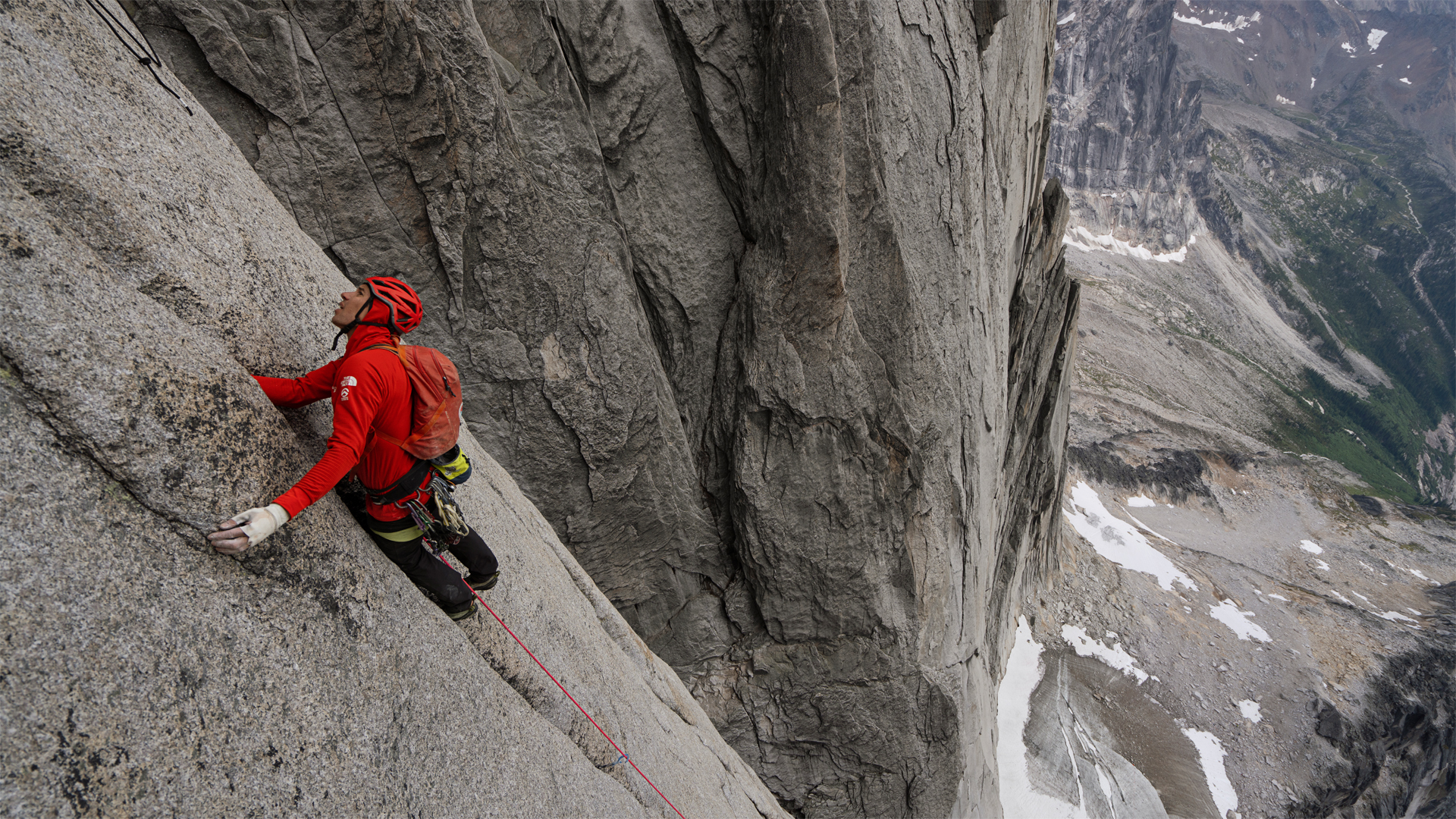The North Face vs Columbia Sportswear: let's get ready to ramble!
Trying to decide which superbrand makes the better gear for you? We take a closer look at the similarities and differences
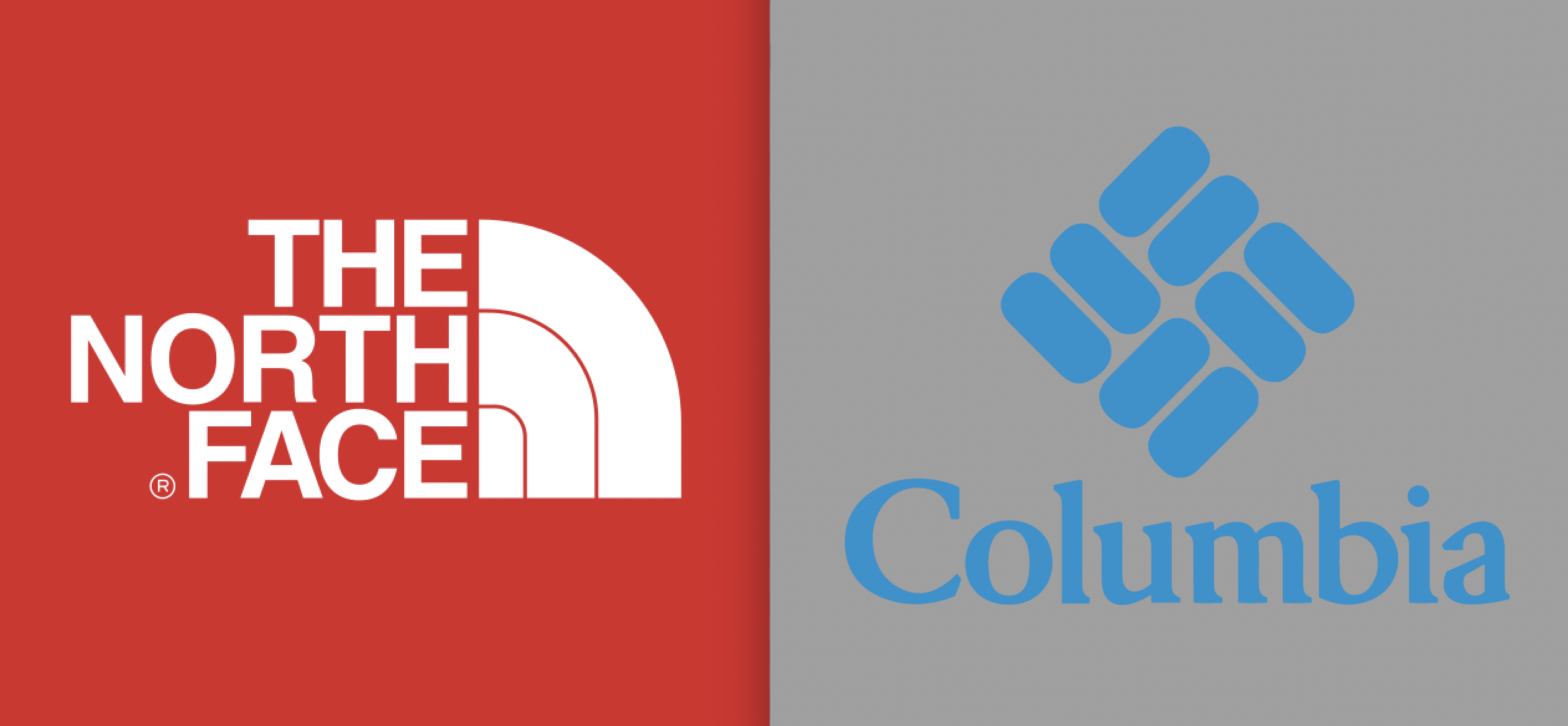
What are the considerations we make before opting to buy a piece of outdoor kit? Well, the first thing should always be: do I need it? The best and most environmentally sustainable hiking gear is the gear you already own. After this, brand reputation, price, performance, eco-creds, how it looks, how it fits and how it makes you feel will all come into play.
So, say you wanted to buy a waterproof jacket from one of the world's outdoor superbrands – there's a lot to consider. If you were thinking of choosing between The North Face and Columbia, we've asked one of our hiking gear experts to provide the lowdown on both, comparing two trail heavyweights.
So: The North Face vs Columbia. Let's get ready to ramble!
The North Face vs Columbia: the verdict
The North Face is working harder towards environmental sustainability than Columbia, which alone is reason enough to opt for the brand. Its range is extensive, with everything from kit for causal walkers to serious mountaineers, which is where The North Face can be very expensive. In general, Columbia gear tends to be more affordable, aimed at the mid-market.
| Header Cell - Column 0 | The North Face | Columbia |
|---|---|---|
| Range of products | Clothing and equipment across the hiking, mountaineering, climbing, snow sports, trail running, camping and training markets | Clothing across winter and summer sports, walking, trail running and urban adventures |
| Origins | TNF started in 1966 when Douglas and Susie Tompkins Buell opened a small camping and rock climbing shop in San Francisco. It was bought two years later by Kenneth Klopp. | Started as a hat making company in 1937 after Paul and Marie Lamfrom flex Nazi Geramny and settled in Portland. |
| Waterproof technology | Uses proprietary DryVent and Futurelight membranes, as well as Gore-Tex | Uses proprietary Omni-Tech and OutDry membranes |
| Green credentials | TNF has been given the 'It's a start' rating by watchdog Good On You, scoring 3/5 for planet, people and animals. | Columbia has been given the 'Not good enough' rating by watchdog Good On You, scoring 2/5 for planet, people and animals. |
| Price | There's a wide range of prices but North Face make more premium gear than Columbia, with higher prices. | Columbia is aimed more at the mid-range, though it owns Mountain Hardwear, which has a more premium range. |
Meet the expert
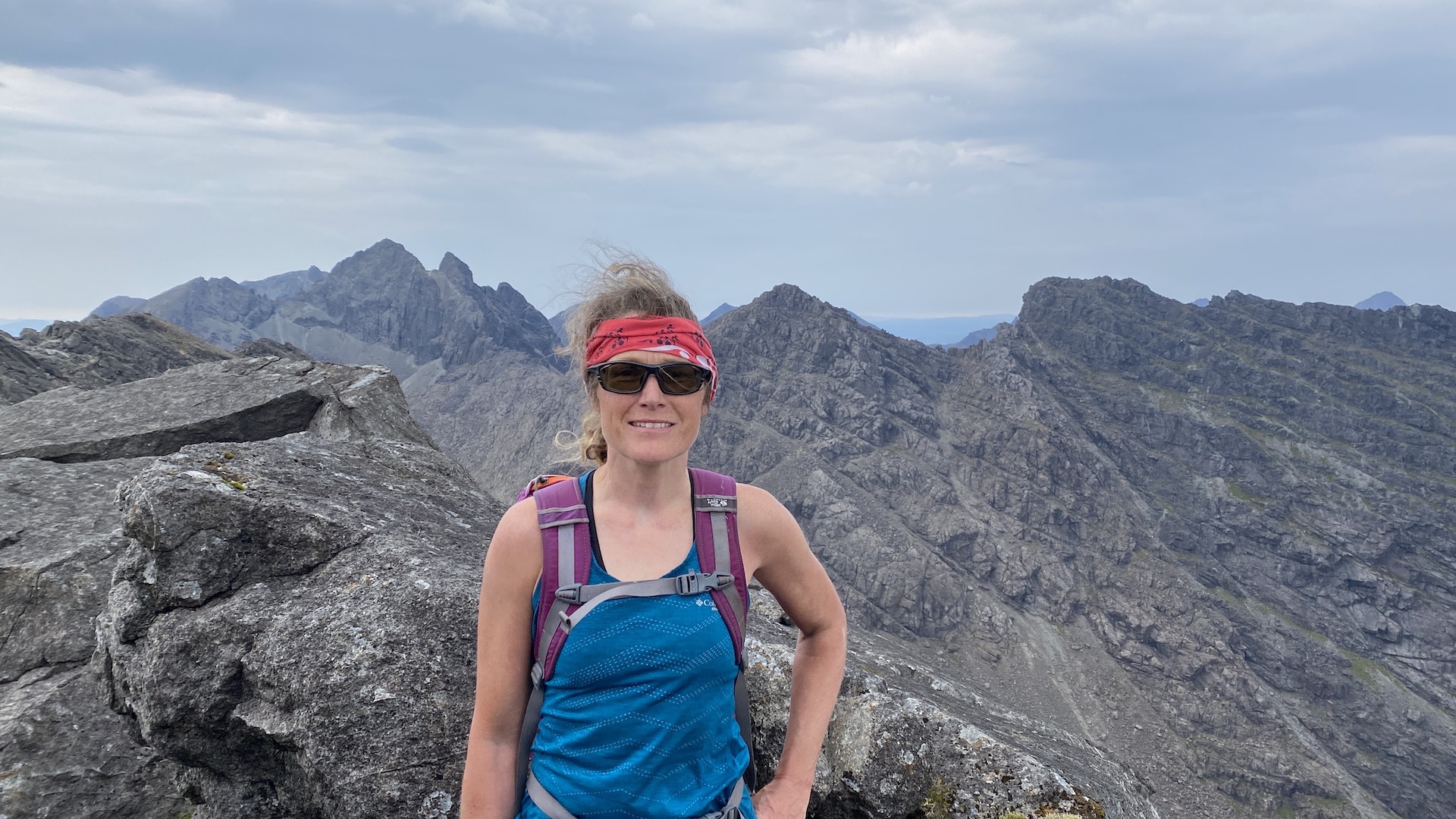
Living in Scotland and regularly hiking and running in the Scottish Highlands, Fiona knows the value of quality gear. She's an outdoor kit expert with a huge passion for the wild places and has been testing waterproof jackets, pants, footwear and gloves for many years.
Today's best deals
TNF and Columbia: the range
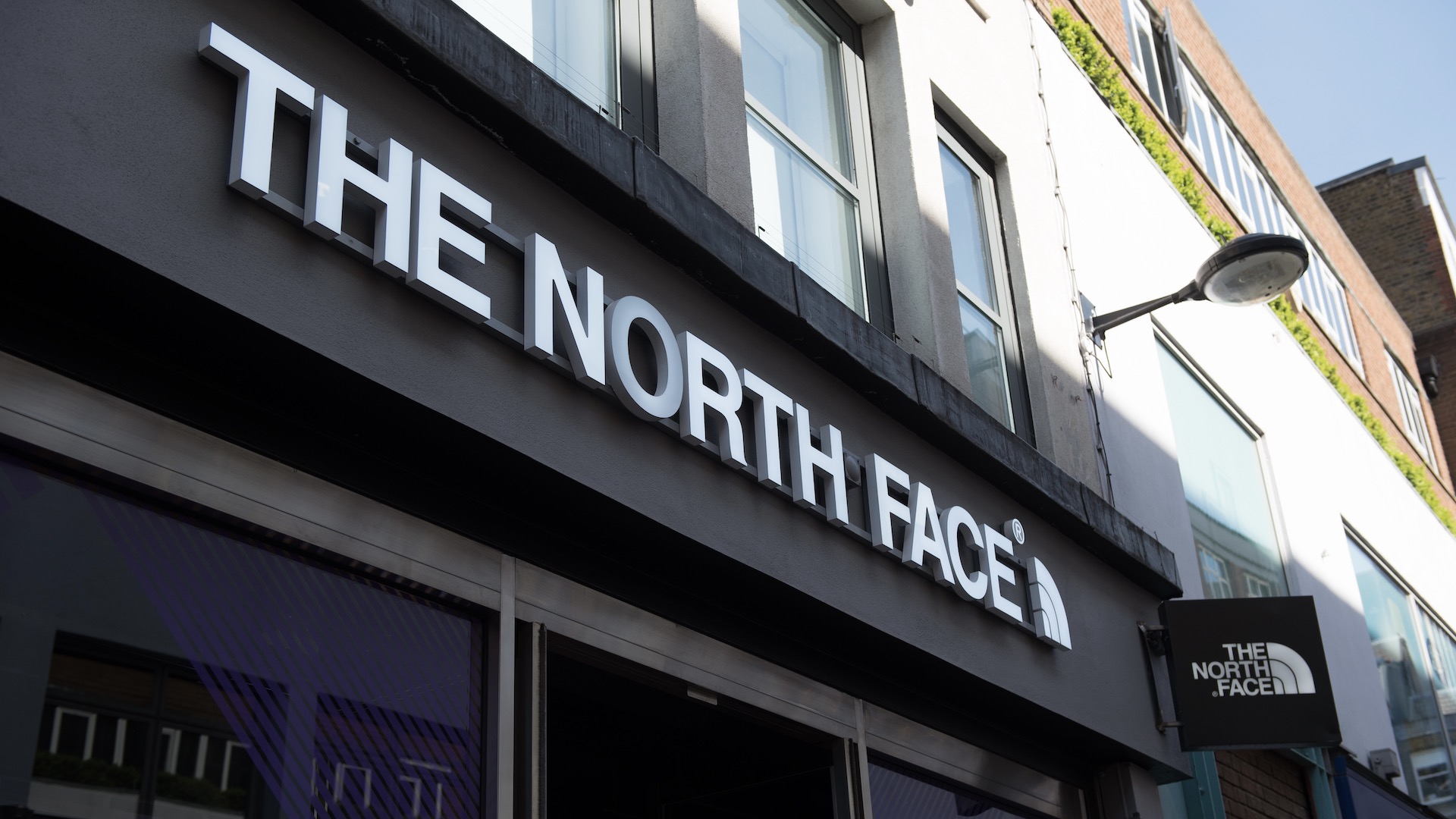
The North Face designs, develops and sells a large range of outdoor clothing and gear for men, women and children across categories such as jackets and coats, tops, bottoms, footwear, accessories, bags and equipment. Different activities are covered, too, including mountaineering, snow sports, ski touring, hiking, trail running, training and climbing.
Columbia Sportswear also sells outdoor clothing, footwear, backpacks and accessories for men, women and children. Activity collections cover winter and summer sports, walking, trail running and urban adventures.
Hat-making roots: Columbia Sportswear
- Columbia was founded as a hat company by Paul and Marie Lamfrom in 1938
- They had fled to the Pacific Northwest from Nazi Germany in 1937
- Columbia have a reputation for good quality, mid-range gear
Columbia Sportswear, which is based in Portland, Oregon, started as a hat-making company. In 1937, Paul Lamfrom, his wife Marie and his family fled Nazi Germany and settled in Portland. They bought a small hat manufacturer, naming it the Columbia Hat Company after the nearby River Columbia.
Advnture Newsletter
All the latest inspiration, tips and guides to help you plan your next Advnture!
The business eventually passed from Lamfrom to Neal Boyle, the husband of his daughter Gert. When Neal suddenly died of heart attack in 1970, Gert and her son Tim Boyle took over. The company expanded to cover a wide range of outdoor clothing including waterproof jackets.
Gert, who died in 2019, was known for her tough persona and perfectionism, and Columbia claims these same high standards continue to guide the company.
Columbia acquired footwear maker Sorel in 2000 and Mountain Hardwear in 2003. In 2006, it also bough Pacific Trail and Montrail, followed by prAna in 2014. In 2010, Columbia acquired OutDry Technologies, which develops and produces waterproofing membranes.
Hiking roots: The North Face
- The North Face was founded in 1966 by Doug Tompkins in San Francisco
- Tompkins championed the idea of "necessity before luxury"
- He left only years after founding but the brand went on to great success
- The North Face was bought by VF Corporation in 2000
The North Face started in 1966 when Douglas Tompkins and Susie Tompkins Buell, who were keen hikers, opened a small camping and rock climbing shop in San Francisco. Two years later the shop was sold to Kenneth Klopp, who moved it to Berkeley in North California and started making products in-house.
Over some 30 years, the company was bought and sold several times. In the 1980s, trade and profits were strong for TNF, but in the early 1990s the company filed for bankruptcy. It managed to survive and came back but then faced charges of accounting fraud.
In 2000, VF Corporation bought TNF and still runs the brand.
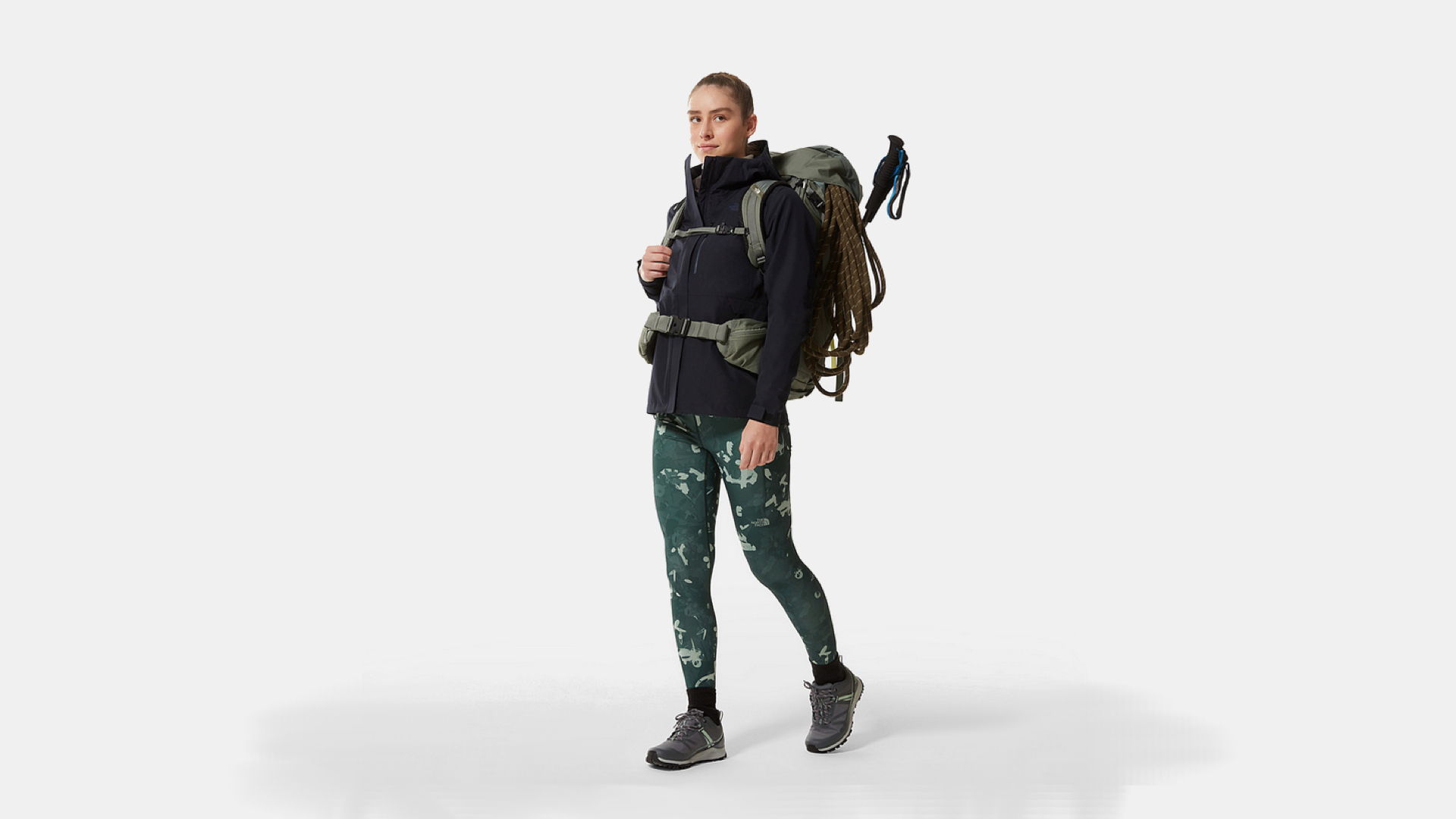
Waterproof technology
- TNF has proprietary DryVent and Futurelight membranes
- TNF also uses Gore-Tex
- Columbia has proprietary OutDry and Omni-Tech membranes
Both The North Face and Columbia Sportswear use their own technology for waterproof garments. This differs from many other brands that mainly rely on Gore-Tex, though TNF also uses Gore-Tex in a range of its waterproof outdoor wear too.
TNF uses two of its own membranes. The first, Futurelight, is developed using a nanofiber material. The nano structure of the Futurelight membrane allows air to pass through for better venting and breathability, but without sacrificing waterproofness and durability. The membrane is made using a technique called 'nanospinning', which creates nano-sized fibres that allow improved air permeability while maintaining waterproofness.
The North Face describes Nanospinning as “a process that deposits a polyurethane solution from 200,000 nozzles on to a surface where it is collected in a randomised matrix to create the membrane. The solution is then used to form a breathable-waterproof film that is bonded to backer and face fabrics.”
This fabric is used in products such as The North Face Lightriser Futurelight running jacket.
The other TNF waterproof fabric is DryVent, which is engineered in a variety of weights, textures and performance characteristics. The company uses DWR treatment on this fabric, too.
Columbia uses its own waterproof-breathable technologies, Omni-Tech and OutDry. Omni-Tech comprises three layers, the outer of which is coated with Omni-Shield and gives the fabric the ability to ward off stains and grime, while also helping to repel water. The second layer is a waterproof membrane, while the third layer is said to work by utilising body heat to make the fabric moisture wicking. The overall feel of Omni-Tech is soft, not stiff, fabric.
Columbia also uses OutDry and OutDry Extreme technology for products such as in the Columbia Facet 60 Low Outdry Waterproof Hiking Shoe.

Green credentials
- TNF has pledged to eliminate single-use plastic use and source all materials responsibly by 2025
- TNF developed its own responsible down standard
- TNF is given a rating of 3/5 by the Good On You watchdog
- Columbia is given a rating of 2/5 by the Good On You watchdog
- Both sell used gear through the ASOS vintage marketplace
Many more outdoors brands are aiming to reduce the environmental impact of their manufacturing processes and to be greener with fabrics and recycling, however it is important to be aware of greenwashing, too.
Let's consider The North Face. In recent years, the company has launched some environmental commitment goals, such as their recycling scheme, Renewed, sourcing all materials responsibly and eliminating single-use plastics, both by 2025.
TNF’s ThermoBall Collection also now uses 100% recycled materials, plus their Explore Fund supports non-profit organizations with an aim of getting people outdoors.
Good On You, which rates fashion brands based on their ethical and environmental performance and policies, gives TNF an 'It's a start' rating. The website reports: "The North Face has good policies to monitor water use in its supply chain but is not taking adequate steps to ensure payment of a living wage for its workers.” The ratings include 3/5 for the planet, 3/5 for people and 3/5 for animals. Find out more.
Meanwhile, Columbia received a rating of 'not good enough' from Good On You. The watchdog claims: “Columbia is not taking adequate steps to ensure payment of a living wage for its workers.” Columbia received ratings of 2/5 across the board for planet, people and animals.
We also considered alternative consumer watchdog, Ethical Consumer, which assesses a number of outdoor companies on environmental issues, as well as ethics.
Ethical Consumer reveals that The North Face is one of only a few outdoors companies that has developed its own standards for down use. This is TNF’s Responsible Down Standard (RDS).
TNF has been awarded a 'middle' rating for use of perfluorochemicals (PFCs), a compound used widely in this sector for its water-repellent properties and which is claimed to have climate damaging issues. The same report gave Columbia a “worst” rating because they use PFCs and have no phase-out date.
The same report considered carbon management and reporting. The North Face was given a best rating, while Columbia received a middle rating. The two brands also received the same rating (middle") for their policies on toxic chemicals use, that is they are “taking some steps in the right direction”.
While outdoors brands do need sales of their products to make profits and survive, some are pushing a campaign to encourage consumers to buy second-hand or repair if possible. The North Face and Columbia both sell used products through ASOS vintage marketplace.
The eco report by Ethical Consumer was last updated in February 2022, while Good On You doesn’t detail report dates. If in doubt of ethical considerations, it’s worth contacting the company directly to ask for a full explanation.
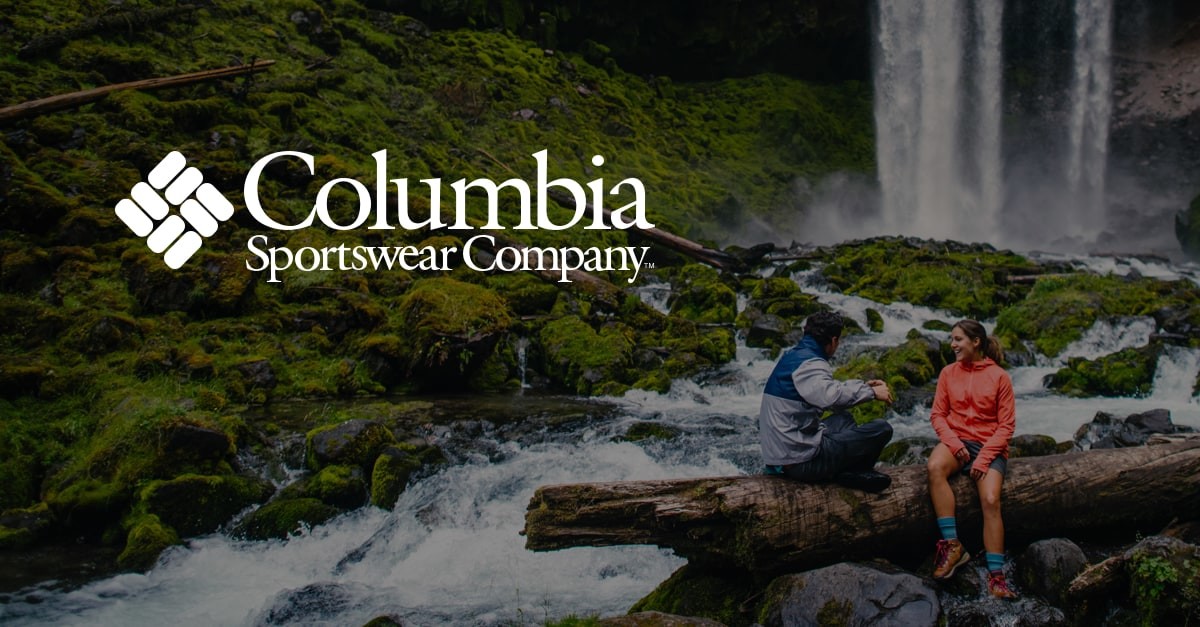
Product for product comparison
Both The North Face and Columbia Sportswear have a wide selection of clothing and gear aimed at different needs. To compare, let’s take a look at a waterproof hiking jacket from each brand.
Columbia's OutDry Extreme Mesh Waterproof Shell Jacket is priced at $250 / £225 and comes in black only. It utilises the brand’s own waterproof-breathable membrane and is made with a fully sealed construction. The pockets also feature water-resistant zippers.
The jacket is windproof and has a drop tail, bonded hood brim and adjustable hem and cuffs. The waterproof shell jacket is packable into its hand pocket and weighs 313g.
At the same price, The North Face Men's Dryzzle Futurelight Jacket is designed with the brand’s own waterproof-breathable fabric, Futurelight and also has FlashDry moisture wicking fabric. TNF says the jacket includes recycled materials.
The jacket, which offers a choice of six colours, weighs 433g on average. Other features include a non-PFC DWR finish, adjustable, three-piece hood, reverse-coil, full-length centre front zip, internal chest pocket, hand pockets, internal stow bag, adjustable cuffs and a cinch at the hem.
The choice is yours
We have compared The North Face vs Columbia Sportswear on a number of different factors. There is not a great deal to differentiate the brands, expect that TNF has a better environmental rating according to two consumer watchdogs.
The choice of company will also include cost, size availability, color choice, looks, suitability for your activity and a bit of impulse. What do you consider when choosing between brands?

Fiona Russell is a widely published adventure journalist and blogger, better known as Fiona Outdoors. She is based in Scotland and is an all-round outdoors enthusiast with favorite activities including trail running, mountain walking, mountain biking, road cycling, triathlon and skiing (both downhill and backcountry). Aside from her own adventures, Fiona's biggest aim is to inspire others to enjoy getting outside and exploring, especially through her writing. She is also rarely seen without a running skort! Find out more at Fiona Outdoors.
